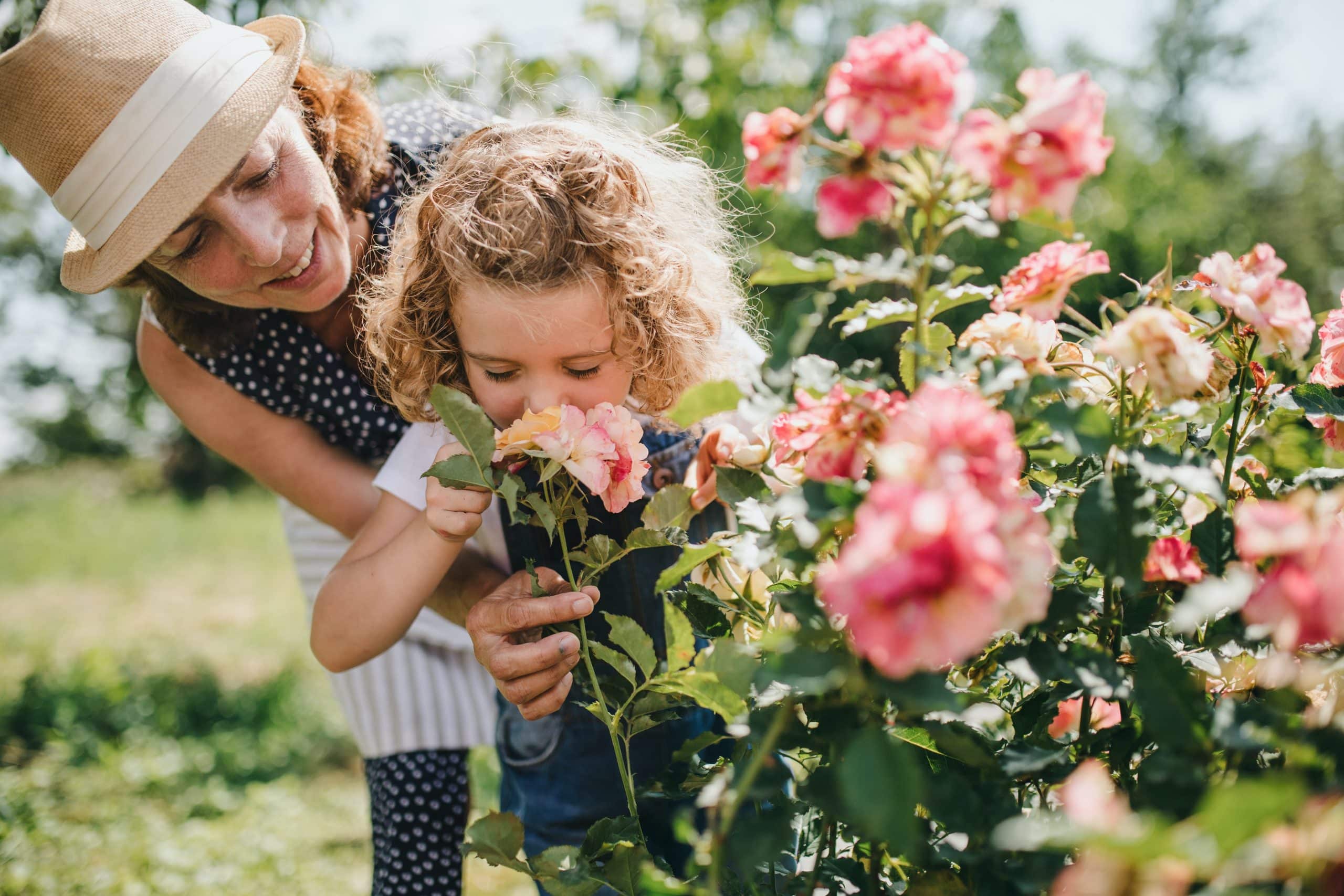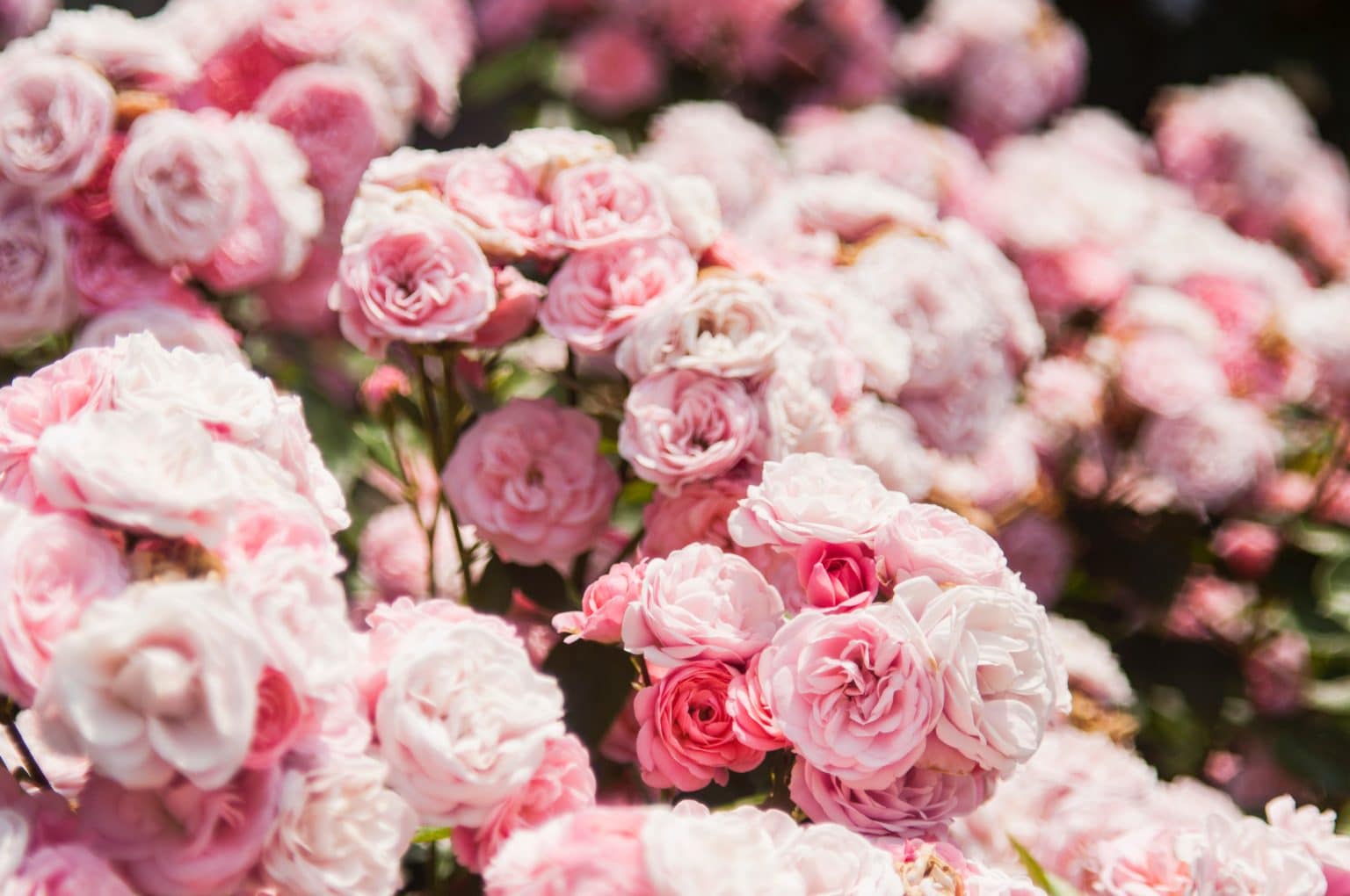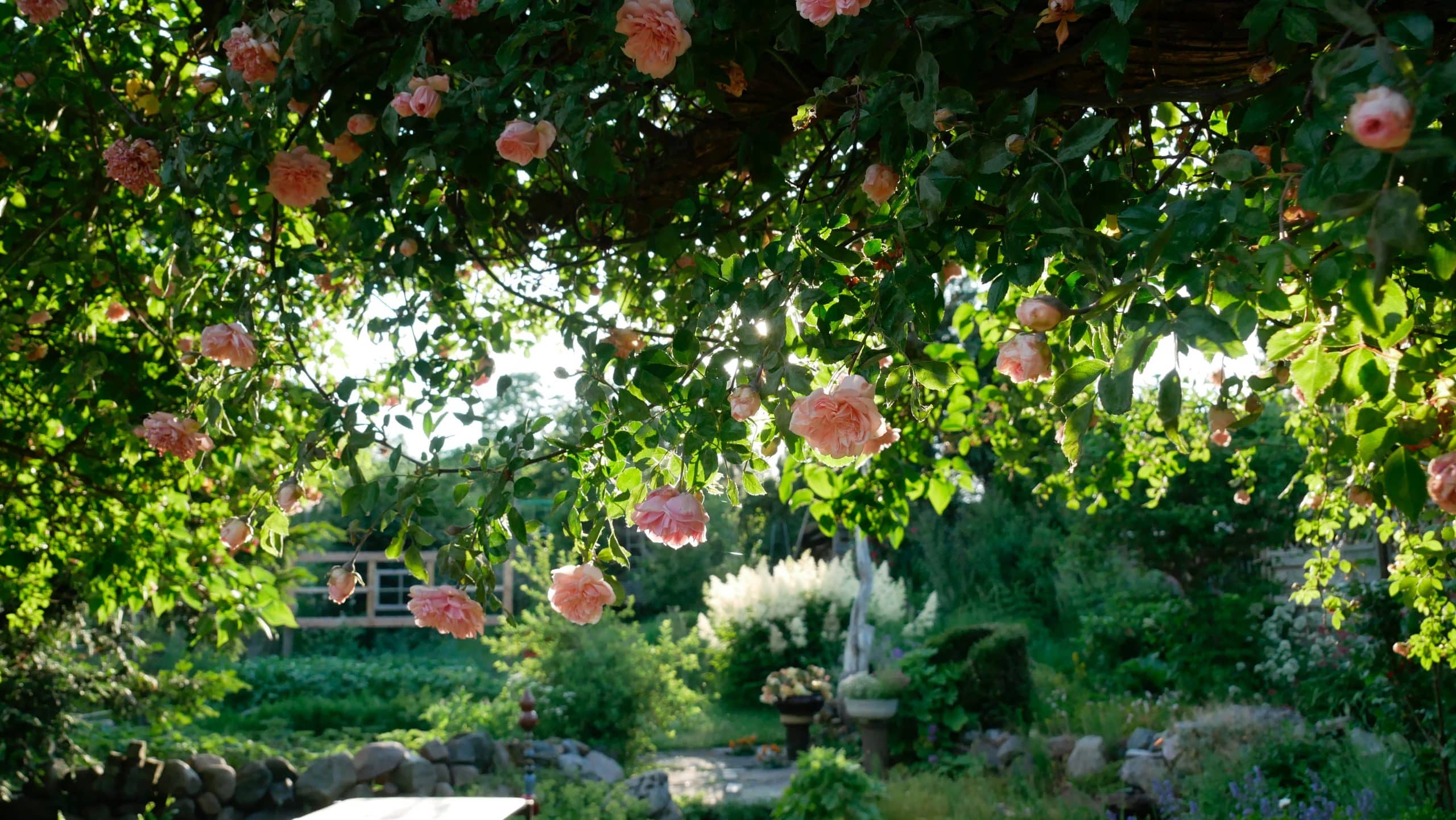Table of Contents
Big question: what’s the difference between garden roses and, well… roses? How many times do we see roses in a flower shop and think, “Nah, roses are roses, right?” Truth is folks, that’s as far from fact as saying zebras ain’t got no stripes. Every rose isn’t just a rose, and particularly, you’ve got a whole subcategory of these florals known as garden roses. It’s kinda like your annual family gathering, except all the folks are different types of roses. English roses, wild roses, floribunda roses, shrub roses and even those highfalutin hybrid tea roses all hustling and bustling together.
What sets garden roses apart from the rose race, though, is their distinctive features, from dazzling ruffled petals showing off like a magician’s fan to their dense round heads sitting pretentiously like crowned royalties. They’re giving the classic roses a run for their money when it comes to disease resistance. Yeah, nature certified them as fit as a fiddle, making ’em perfect for that beauty in a garden setting we all want. And hey, while roses typically drop their petals faster than a misguided coin, garden rose variety sure picks a longer battle in the vase life competition.
An In-Depth Look into Garden Roses
Let’s look at those English Roses now – the versatile ones, you know. They’ve got the grace of hybrid tea roses and the sturdiness of their shrub rose relatives. These are your repeat bloomers. Doesn’t matter what season, they can keep blooming like a Broadway production. Hand-bred by the green-thumb guru, David Austin, they do look distinctively like an old garden rose variety. All dressed to the nines and having the scent of freshly made lemonade, or as some prefer calling it, light citrus!
And then, you’ve got your proud Wild roses, more anti-social, preferring naturalized setting to a trim lawn. Species roses, they call them. These are the free spirits of the rose world, the ones that wave around rose hips like ancestral talismans and show off their thorns like metal bands at a gig. Each stem of a garden rose variety could be as excitingly different as a box of assorted chocolates, from straight and tall to the ones gracefully bowing down with weeping stems.
Understanding the Basics
Okay, let’s break it down: roses have a bunch of subcategories. We have our royal highnesses – grandiflora roses, the refined hybrid tea roses, the freely-growing shrub roses, the show-off floribunda roses, and the antique English roses. Each has their growing season, so every garden has its time to shine. Garden roses, on the other hand, are more like a lifetime achievement award, providing an ensemble of beauty throughout the year.
The History of Garden Roses
So, roses’ve been growing in our grandmas’ backyards since they just couldn’t do without their petticoats. Then appeared the so-called “La France” in 1867, a hybrid tea rose hailed as the first of the garden roses. Afterward, garden roses kinda took a rose revolution, with horticultural whiz David Austin introducing English Roses, leading to the garden roses we know and relish today. Quite a historical trajectory!
Unique Features of Garden Roses
Alright, time to celebrate the uniqueness. Garden roses, especially English Roses, offer a bouquet of scents, from fruity to tea-like or even musky. Mmm… that’s how a morning garden stroll should smell! They’re also pretty tough cookies, enduring the chill just fine, and standing up to diseases like a youngster up against their math homework. Despite being a mixed bag, each garden rose presents a marvel with its ruffled petals and varying hues. Just like us folks, every one of ’em has something different brewing in its floral soul.

An In-Depth look into Roses
Alright, let’s cut to the chase – we’re talking regular roses here – not your fancy-schmancy hybrid mix but the good old English roses. Now, these are your bread-and-butter – dependable, hardy, timeless. You might recognize them from grandma’s flower bed or a watercolor painting hanging in your local diner. They’ve got distinctive deep, velvety petals that seem to fold over each other in an elegant ruffle. When you think roses, more often than not, you’ve got these classic beauties in mind.
These English roses vary in color – red, pink, white, and colors in between. They’ve got quite the reputation for their scent too, wafting an aura of sweet, fresh country air. Contrasting to garden roses, these are your rugged, standard roses, built to shake off common peculiarities and illnesses that love to bug roses. Akin to the seasoned fisherman navigating the choppy waters with calm and precision.
Understanding the Basics
English roses are not the type that demands excessive tending. They’re quite humble, content, and cozy with typical garden soil and thrive in a sunbathe-y kinda spot. Like those days when you’re content with a hammock, cold brew, and good sunshine. A cool winter chill is crucial to keep ’em ticking along nicely, kind of like your buddy who’s convinced that ice baths are the solution to all his aches and pains.
The History of Roses
Our chum, the English rose, has enjoyed the center stage for quite a while. Any rose hybridized before 1867 is classified as an Old Garden Rose. You could compare these roses to that ancient Victrola that your grandpa refuses to part with – priceless and treasured. Wild roses played a landscaper’s favorite long back, usually stealing the summer show with their beautiful blooms and gorgeous thorns. But over time, English roses, with more petal power and resistance, started enjoying the spotlight in garden venues.
Unique Features of Roses
English roses have a certain unreplicated charm, kind of like that hole-in-the-wall restaurant that serves the best burgers you’ve ever tasted. Every stem is distinct – sometimes straight and tall, other times lovingly curved. It’s like collecting seashells – you’d never find two identical ones. Their varied petals are comparable to a crowd at a carnival – folding, fluffing, and presenting a beautiful mishmash in a riot of colors.
Comparing Garden Roses and Roses
The debate comparing garden roses and English roses is like arguing favorite sports teams, real tense. Garden roses have lush, billowy blooms, they put up an extravagant show. English roses, however, earn brownie points for resilience and longevity. They might not be fancy, but they’ve got reliability and vigor in their corner.
While the two varieties justifiably share the roses’ family name, there’s no denying their distinctive features – from petals, fragrance and even the diseases they shake off, that differentiates them greatly. Reminiscent of siblings – similar yet so very different. But hey, the rose world is wide enough for these blooms to cohabit harmoniously, like two squares on a checkered tablecloth. They’ve got their unique spots and charisma that adds their charm to the world of floriculture.

Size and Shape: A Comparative Analysis
When it comes to dancing the tango between size and shape, roses are typically a multifaceted bunch. While a layman might think it’s all just big heads and pointy thorns, it’s way more interesting than that. Hybrid garden roses, the belle of the ball, like to play it soft and smooth. They ditch the tight, uptight look for a more relaxed approach, forming a poised and pleasing body with smoother lines. On the other hand, standard roses are like that rigid drill sergeant – tight and tense. Their design brims with pointed petals, paying homage to their wild, thorny ancestors. It’s chalk and cheese, really.
Fragrance: How Do They Vary?
The real juicy story here lies in the sweet department. Garden roses snub the idea of having a ‘specific scent’. Instead, they go for a more classic appeal, toying with the timeless fragrance we associate with roses. The bouquet on these is different from your typical roses. A Garden rose’s perfume is like listening to an opera in a flower shop – it’s richer, fuller and significantly more aromatic. On the other hand, other species of roses smell great, sure, but they’re not exactly hitting high notes.
The Diversity Debate
One thing about roses that the beginner’s eye might miss is the diversity. If roses were a family, they would definitely be holding an incredibly diverse family reunion. In this vast floral stadium, from the hardwoods to the nosebleeds, there are countless hybrids to be found. It’s a riotous tumble of size, shape, and color and honestly, no two are the same. While there’s beauty in uniformity, these hybrids make for an excellent curveball in the usual line-up. They’re like snowflakes, except, you know, not cold and wet.
Examining the Differences in Cost
Let’s pull back the curtain for a bit of a peek inside how these beauties affect your bottom line. See, garden roses technically belong under the broader umbrella of the rose category. Think of it as a gorgeous, luxuriously appointed coach under the umbrella of transportation. However, several things set it ostentatiously apart from good ol’ dude-next-door roses. And the price tag, my friend, tells that tale more clearly than a neon sign in a dark alley.
Comparing the Uses of Garden Roses and Roses
How’s about we examine the roles each of these leading ladies play, yes? Now, with garden roses, they’re like the gold standard on the floral scene. They thrive in garden settings and add a touch of celestial beauty wherever planted. On the other hand, wild roses (species roses) set their sights multitasking – they’re the veritable jack-of-all-trades. They work well in landscaping, thrive in naturalized settings, put on one hell of a show during early summer flowering and make a splendiferous display of rose hips, proving they’re more than just a pretty face!
Disease Resistance: Who’s the Winner?
While all roses have their beauty, when it comes to going toe-to-toe with diseases, garden roses put up a mean fight. These stubborn beauties have been primped and pampered not just for the good looks but a sturdy constitution as well. They pack a pretty robust punch when it comes to warding off diseases, even without wrapping their knuckles. Think boxing gloves off, fists clenched, ready to lay the smackdown on any unwanted pests or sicknesses.
Different Growing Conditions for Garden Roses and Roses
Imagine you’re a Sunday afternoon gardener and you’re torn between florist roses and garden roses. Now, these ain’t your run-of-the-mill daisies we’re talking about. Now, florist roses are a kind of like your indoorsy type, prefer it under the greenhouse shade – a controlled environment, away from the wind and rain, pests and diseases, and can bloom two, sometimes three times more than those grown under that big ol’ sky. They are like the famous folk in the Hollywood hills, nurtured in perfect conditions, always ready for a show.

Focus on Rose Categories
Now, when it’s about the roses, things can get real confusing real fast, but don’t fret. It’s all bout breaking it down like how grandma breaks down her secret apple pie recipe. Roses come in different shapes and sizes, and garden roses? They’re just another category of roses. Think about it as a brand- your favorite beer ain’t any less of a beer, is it?
But talking about these garden roses, they’ve got characteristics setting them apart. Now I ain’t no botany professor, but these things, they grow differently. Some are grown as bushes, others prefer being shrubs or climbers. Each one, offering something unique to the eye.
Exploring Climbing Roses
Now, climbing roses ain’t just your standard roses. Imagine the athletes, or the gymnasts of the rose world, they like to reach out, cover a wall or a trellis, and turn it into this floral display that could wink a smile from anyone’s face. They get to places you wouldn’t think roses could be and paint a green thumb’s Mona Lisa, each one charmingly different from the other, each bloom a masterpiece in its own right.
Unraveling the Appeal of Grandiflora Roses
Ah, grandiflora roses. They’re the sort you’d see donned by a duchess or sitting pretty in a millionaire’s garden party. You know those gowns with the ruffled skirts? Imagine that, but on a stem. They’re big, bold, with deliciously varied ombre petals, standing proudly, turning heads, and igniting that green-eyed monster in the folks around the block.
Introducing Hybrid Perpetual Roses
Hybrid perpetual roses, they’re a bit like the superheroes of the rose world. Sounds a bit silly calling a rose a superhero, doesn’t it? But think about it. Just like those comic book characters, these roses are a crossover of the best traits, aiming to thrive in diverse conditions – a classic case of nature playing Frankenstein. Every bloom seems like a new edition, a different variety, an unexpected surprise waiting to outdo the last.
From the Rose Garden to Reality: A Recap of Garden Roses vs Roses
Roses from a greenhouse, those florist roses we often associate with Valentine’s Day and anniversaries, differ from the garden roses that adorn outdoor spaces. Think of it like suits versus casual wear. Both have their charm and uses but under varying circumstances. These heated and light-controlled petal-pushers have a quicker growth habit and are dedicated bloomers, flowering two to three times more than the roses grown in your grandmother’s garden.
Now, when you begin to peek into rose species, you’ll discover a world as diverse as, well, roses in a flower show. The roses are categorized under the rosa genus and include up to 150 species. Like kids in a candy store, you’ll come across everything from climbing roses flirting with fences to French roses adding elegance to manicured gardens, and polyantha roses strutting their showy blooms. David Austin Roses and other garden rose hybrids have carved a niche for themselves with their repeat blooming nature and fragrant flowers.
Then there’s the spunky side to roses. They fight back, you know. Garden plants standing tall against pests and diseases like powdery mildew. Let’s be honest, their survival strategy game could put reality TV show contestants to shame. The roses grown in greenhouses, well, they’re like fancy city folks with their amenities, relying on controlled conditions and slow-release fertilizers. Outdoors, roses deal head-on with challenges. They have resistance, that’s for sure, but even the strongest of roses are susceptible to some invaders. It’s the nature versus nurture gig, in full bloom.

I’m John, a “seasoned citizen” and an avid gardener. I live in Minnesota, where our weather and growing conditions can be harsh and challenging. Over the years, I have learned a thing or two about being successful in growing things. I have curated these tips, which I think are helpful for the beginning gardener and the seasoned experts. If you have feedback, let me know in the contact form.




